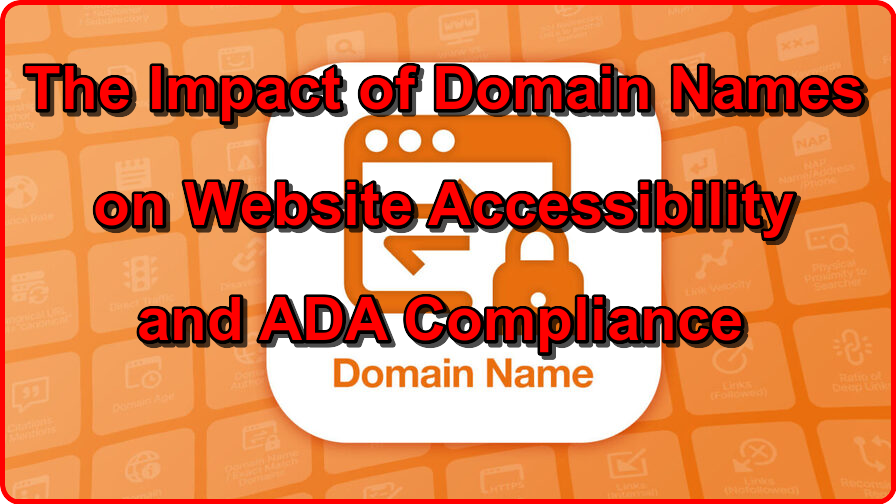
In today’s digital age, ensuring website accessibility and compliance with the Americans with Disabilities Act (ADA) is crucial. While many website owners focus on optimizing their site’s design and content for accessibility, the impact of domain names on accessibility is often overlooked. In this blog post, we’ll explore how domain names can affect website accessibility and ADA compliance, and provide best practices to ensure an inclusive online experience for all users.
- Clear and Descriptive Domain Names: Choosing a clear and descriptive domain name is the first step towards accessibility. A domain name that accurately represents your website’s content and purpose can assist users with disabilities in understanding the nature of your site. Avoid generic or ambiguous domain names that may confuse visitors, and opt for names that provide meaningful information about your website.
- Consider Readability and Pronunciation: Domain names that are easy to read and pronounce enhance accessibility for all users. Avoid using numbers, hyphens, or complex spellings that can create confusion or make it challenging for screen readers to interpret the domain name correctly. Opt for simple, straightforward, and easily understandable words or phrases that are accessible to users with various disabilities.
- Avoid Exclusionary Language and Offensive Terms: Ensure that your domain name does not contain exclusionary language or offensive terms that may discriminate against or offend users with disabilities. Be conscious of the impact of your domain name on different groups and promote inclusivity by choosing names that are respectful and inclusive to all individuals.
- URL Structure and Hierarchy: The structure and hierarchy of your domain and URL play a role in website accessibility. Use descriptive words and meaningful subdirectories in your URL structure to indicate the organization and categorization of your content. This helps users navigate your website more easily, especially those who rely on screen readers or assistive technologies to access information.
- Compatibility with Assistive Technologies: Ensure that your domain name and website are compatible with assistive technologies commonly used by individuals with disabilities. Test your website with screen readers and other assistive devices to ensure that the domain name is properly read and understood. Address any compatibility issues to ensure a seamless experience for all users.
- ADA Compliance and Accessibility Guidelines: While domain names themselves do not fall under specific ADA compliance guidelines, the overall accessibility of your website does. It’s important to ensure that your website, including its domain name, adheres to web accessibility guidelines such as the Web Content Accessibility Guidelines (WCAG) 2.1. Consider seeking professional accessibility audits or consulting experts to evaluate your website’s compliance and make necessary improvements.
- Ongoing Accessibility Monitoring and Updates: Website accessibility is an ongoing process. Regularly monitor and evaluate the accessibility of your domain name and website, and stay informed about evolving accessibility standards and best practices. Make necessary updates and improvements to ensure that your website remains accessible to all users, regardless of disabilities.
Domain names play an essential role in website accessibility and ADA compliance. By choosing clear and descriptive names, considering readability and pronunciation, avoiding exclusionary language, structuring URLs effectively, ensuring compatibility with assistive technologies, and adhering to accessibility guidelines, you can enhance the accessibility of your website and provide an inclusive online experience for all users. Embrace the responsibility of making your domain name and website accessible to everyone, contributing to a more inclusive digital landscape.
